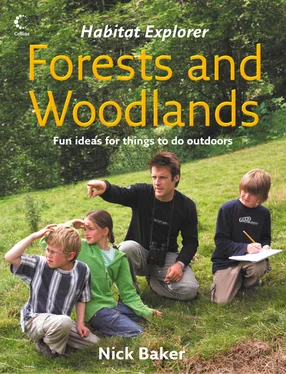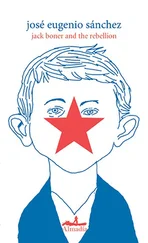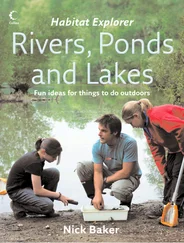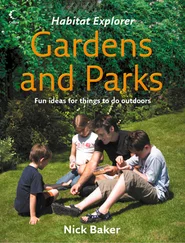Making an inventory of a tree near youis always a fun thing to do, and would be a great idea for a personal project or something you can do at school. Try to count as many living things as you can, from the microscopic algae that give the cracks in the bark a greenish tinge, to the birds and mammals that visit. You will be very surprised at what you find.
But just imagine what happenswhen you stick a collection of these incredible trees together! The effect is magnified, which is why woodlands are such amazing places to explore and why some people make such a fuss when they get removed.
This chapter is about the trees themselves– what they are, how they live and grow. Get to know the trees and you will begin to understand and love the heart of the wood itself.
Fab facts
Here are some BIG numbers for the big European oak:
* 40 hectares of woodland can support 300–400 birds.
* 30 different types of lichen have been found on the bark of these trees.
* 200 species of moth live on the leaves.
* 45 true bugs suck its juices and stalk other prey among its branches.
* 65 mosses and liverworts can be found on the bark.
* 40 species of galls have been found on oak trees.
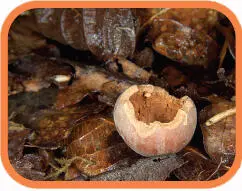
An oak apple or gall may end up on the woodland floor, but while it’s alive, it grows much further up a tree, near the tree canopy.
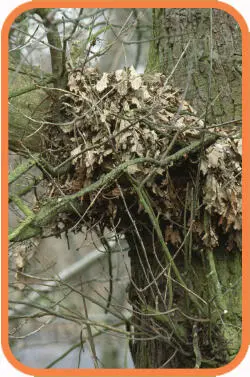
A grey squirrel’s drey, neatly perched high in the canopy.
The dappled sunshine emerging through the tree canopy is always a cheering sight.
Many woodlands have been a feature of our landscapefor a long time while others have been cleared and have either been re-colonized or re-planted. While all woodlands offer shelter and food for certain creatures, those that have been around for longer tend to have a greater number of species. This variety of species is called biodiversity.

In the spring, investigate your local woodland.Is it ablaze with colour, as a carpet of plants explode into flower and leaf? There is only a brief window of warmth and light in a wood before the leafy canopy closes over and returns most of the wood floor into the dappled half light. This is why so many plants in the understorey have broad leaves (see also opposite).
We humans have real trouble thinking outside of our own life expectancy.We tend to think that we have had a good innings if we get to 80 years old, but most trees at 80 have barely got going. Living at a slower speed than us is part of their fascination. As long-lived plants, they have their own stories to tell. They are like living history lessons, telling us about their own lives and the conditions to which they were exposed as they grew.
Get to know some of the truly old trees in your area.Work out their age ( see pages 18–19and the Take it further box, opposite) and learn about their history; perhaps relate it to famous historical events in human history, such as wars and invasions. You will soon get a sense of what events these trees may have stood through. This is the first step to tree appreciation and helps you to enjoy them fully. You can also maybe help a little by planting a few of your own ( see pages 24–5).
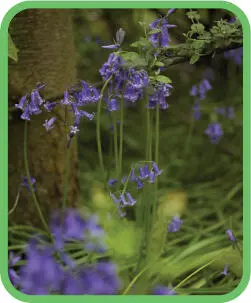
Look closely at many spring-flowering plants. They have large, broad leaves designed to steal as much of the sparse light that falls on them as possible. Many also grow in large and dense mats, a sign that they reproduce and spread mainly by bulb splitting and underground runners, rather than by seeding. The fact that they spread like this means they tend to be specialized at surviving in woodlands but are next to useless at spreading to new locations. As a result, they take many years to colonize a woodland.
Woods were once used as a crop and their products were used in day-to-day life. Look for multi-trunked trees that seem to grow from a thick and gnarly old base. These may well have been coppiced at some time. This is the process of harvesting the straight poles that sprout from a cut stump. Some of these would be used for building poles or for making hurdles or fences, while others would be burnt to produce charcoal for smithies and home fires. Today, coppicing still goes on in some woods.
Take it further
* Other clues to the age and use of a woodland or hedgerow can be found by looking for tell-tale traces of how man has managed them.
* Old woods tend to have uneven and curved boundaries while new ones are usually straighter.
* Plants are another great way to tell if a woodland is ancient. Look for:
Bluebell
Wood anemone
Pignut
Wild garlic
Wood sorrel
Dog’s mercury
Cow wheat
Primrose
Wild daffodil
Early dog violet
Starting to identify trees can be a little daunting.Some of them are easier to tell apart. For example, conifers have cones and needles and they keep their leaves all year round. Deciduous trees have big flat leaves that turn brown, yellow and red and fall off in the winter. But learning about trees in more depth can be difficult. To help, make your own tree log. This is an excellent way to collect as much information as possible about the trees in your area, and you can start at pretty much any time of the year.

The first characteristic to look for in your treeis the shape of the leaves. Each species has its own very distinctive leaf pattern. Most are instantly recognizable from this quality alone, although there are a few that you may find a little tricky, such as hornbeam and elm, and a few of the exotic species introduced from other countries, but you will soon get the hang of the main native species.
Start by collecting a selection of leaves,either from the ground or directly from the tree itself. Once you have these leaves back at home there are several ways you can incorporate them into your log – start with the ideas opposite and more are given on the following pages. You can then move onto exploring the bark ( see pages 16–17), seeing how old it is (pages 18–19) and drawing its profile ( pages 20–21).
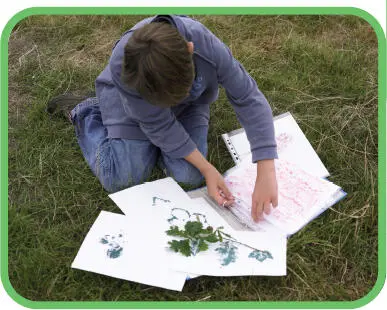
To make your tree log, use a scrap book or collect some loose pages or some clear plastic pockets. You can keep adding to your file as you find more information and evidence.
YOU WILL NEED
> leaves
> sticky tape
> watercolour paint
> paintbrush
> paper
> shoe-cleaning brush
> shoe polish
Читать дальше
